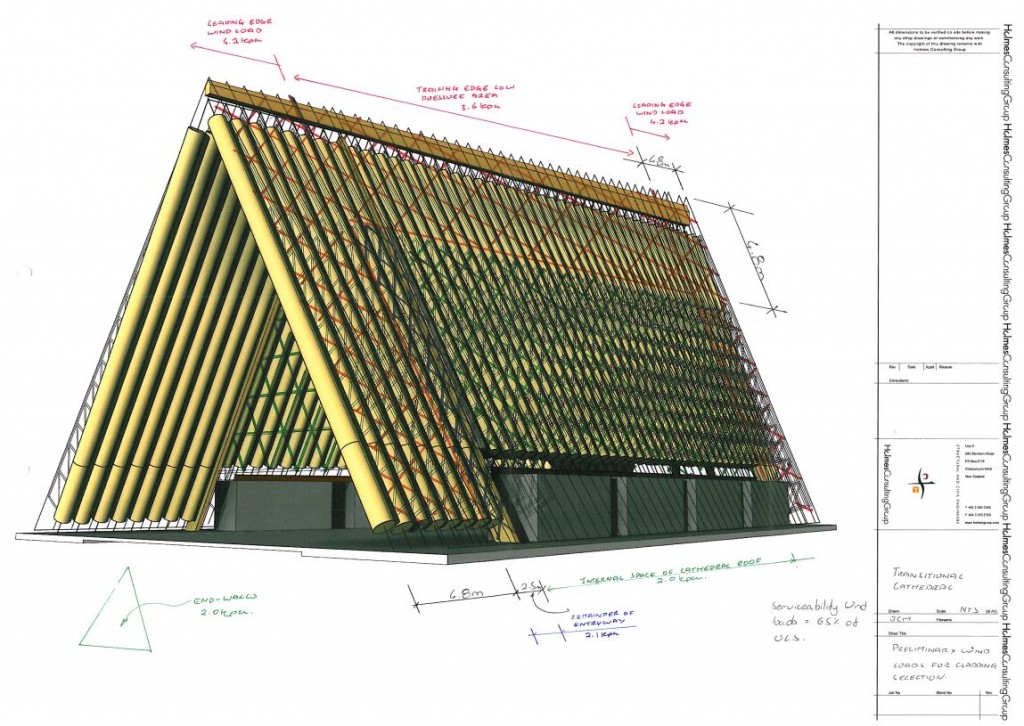Hit enter to search or ESC to close
Christchurch Cardboard Cathedral
Fabricator Nulook, Raylight Aluminium Ltd
Location Christchurch
Systems SovereignSeries™
Products Coltilite Louvres, 40mm Rose Windows, Commercial Sliding Doors 100mm
Industry Sector Commercial
Architect / Designer Shigeru Ban
This project first came to the attention of Nulook, Raylight Aluminium in September 2011 when approached by Naylor Love in Christchurch. Raylight were asked to present a confidential proposal and budget estimate
for the temporary “Cardboard Cathedral” as per the drawings prepared by Shigeru Ban. At this stage the glazing was all to be Poly-carbonate to suit the lightweight construction. The Rose Window was to be
triangles of different colours.
Shigeru Ban is world reknown for his buildings and this project was seen as an opportunity to put Christchurch on the world “architectural map” during the rebuilding of the city following the devastating
earthquakes which partially destroyed the landmark stone cathedral in Cathedral Square.
The Christchurch Cathedral Group are the owners of the building which is built on land owned by St John’s of Latimer Square and will be utilised by the Cathedral until a permanent replacement is decided
upon and constructed.
Nulook, Raylight Aluminium, who have been in business since 1967, supplied the aluminium joinery. This included the Altus Window Systems SovereignSeries frames to the container windows which form the base of the building and are utilised as office space, Altus 100mm Commercial sliding doors to the main entry and 40mm frames to the Rose Window. Coltilite Louvres were imported based on predetermined sizes with a lead time of 4 – 5 months for the south wall of the building.
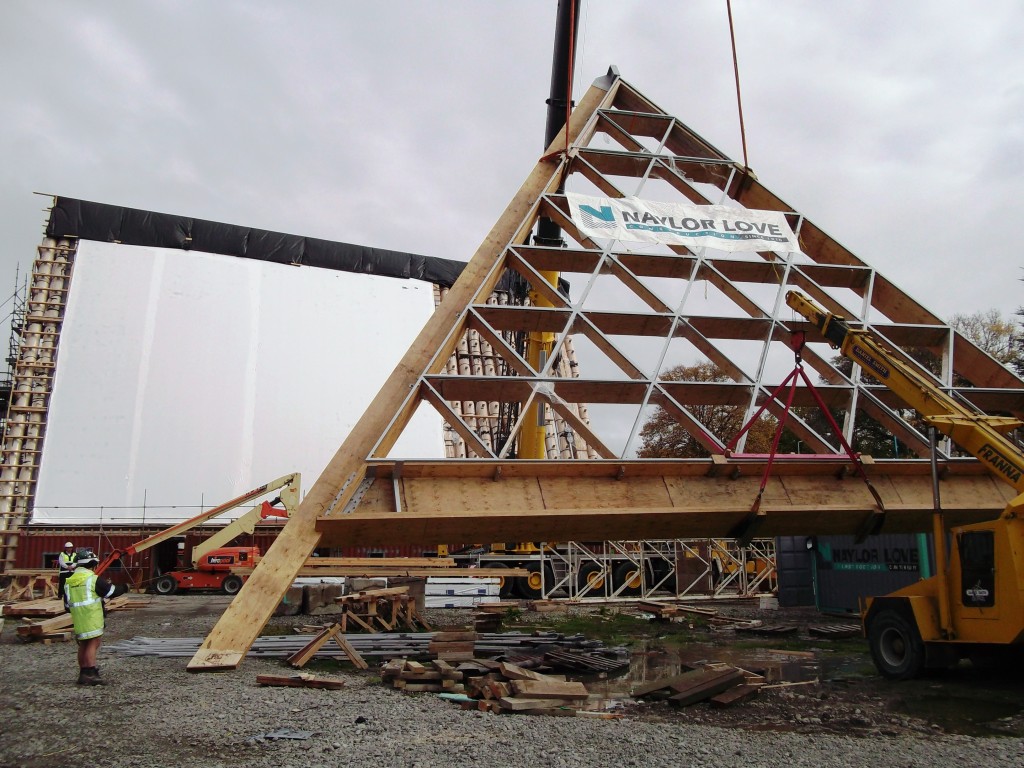
The Project
The project had a total value of $6.4 million and took much longer to build than planned. This was due to the difficulty of the construction which was new to everyone involved as well as some serious wet weather delays.
Eugene Coleman from Warren and Mahoney Architects had several meetings with Nulook, Raylight Aluminium to fine tune the architectural details based on Shigeru Ban’s drawings.
The biggest challenge for Nulook was initially the design of the junctions in the Rose Window as well as the logistics of building something that was a triangle, 17m x 17m. This was constructed in sections in the Nulook, Raylight factory which were then taken to site, joined together, fitted to the massive timber support structure and finally the entire window craned into position.
The installation of the Rose Window went very smoothly and was done by Profix Ltd. The most difficult part was fitting the enormous sashes (3 triangles) once the frame was in place. Window control gear by Door and Window Systems Ltd was added to operate the sashes in conjunction with the air conditioning system.
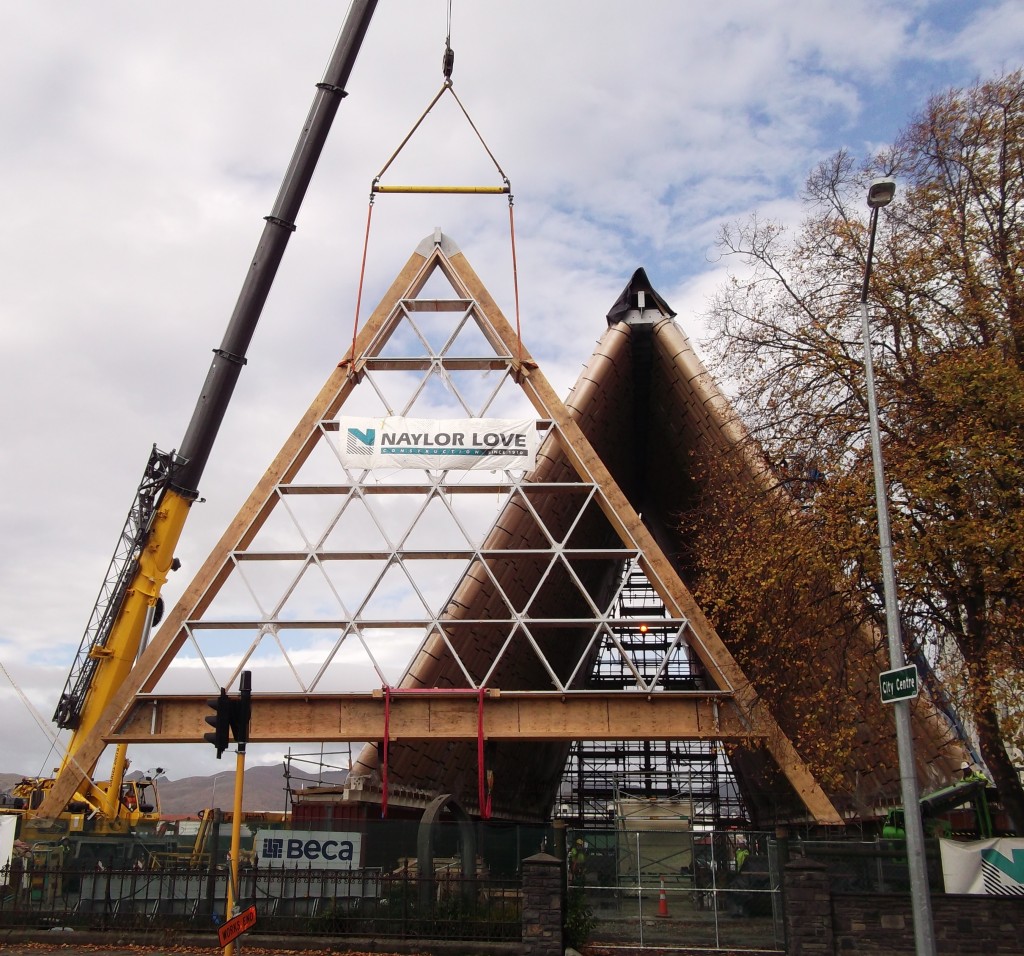
The Rose Window
The screen printed IGUs (insulated glass units) were manufactured by Metro Performance Glass to pre-determined sizes based on Nulook, Raylight’s CAD drawings. They then were glazed off scissor lifts and knuckle booms to get access over the entry roof. Each IGU weighed approximately 70kgs. The screen printed design was based on the rose window stained glass from the original Christchurch Cathedral.
The Rose Window was made out of 40mm Commercial Mullion, using the split mullion as the main horizontal member. All sizes for this window were taken from a CAD drawing from the structural timber supplier, which Nulook, Raylight then overlaid drawings of their mullions to.
Nulook, Raylight then used this drawing to provide all glass sizes to Metro Performance Glass so they could get the printed units into production. The Rose Window was sent to site in horizontal sections and attached to the timber frame while it lay in the car park.
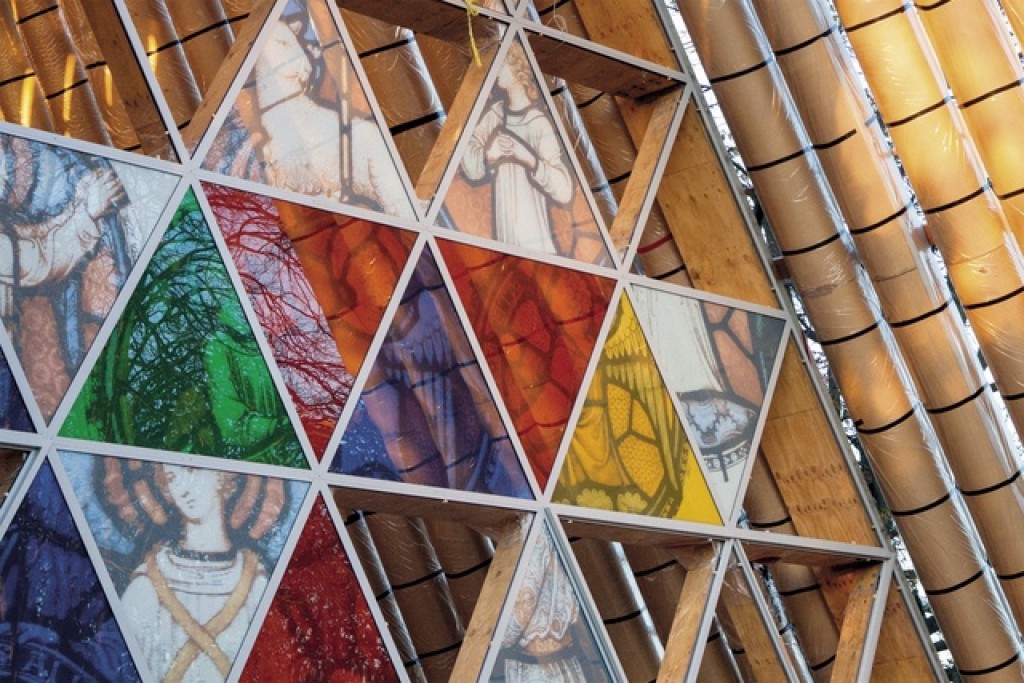
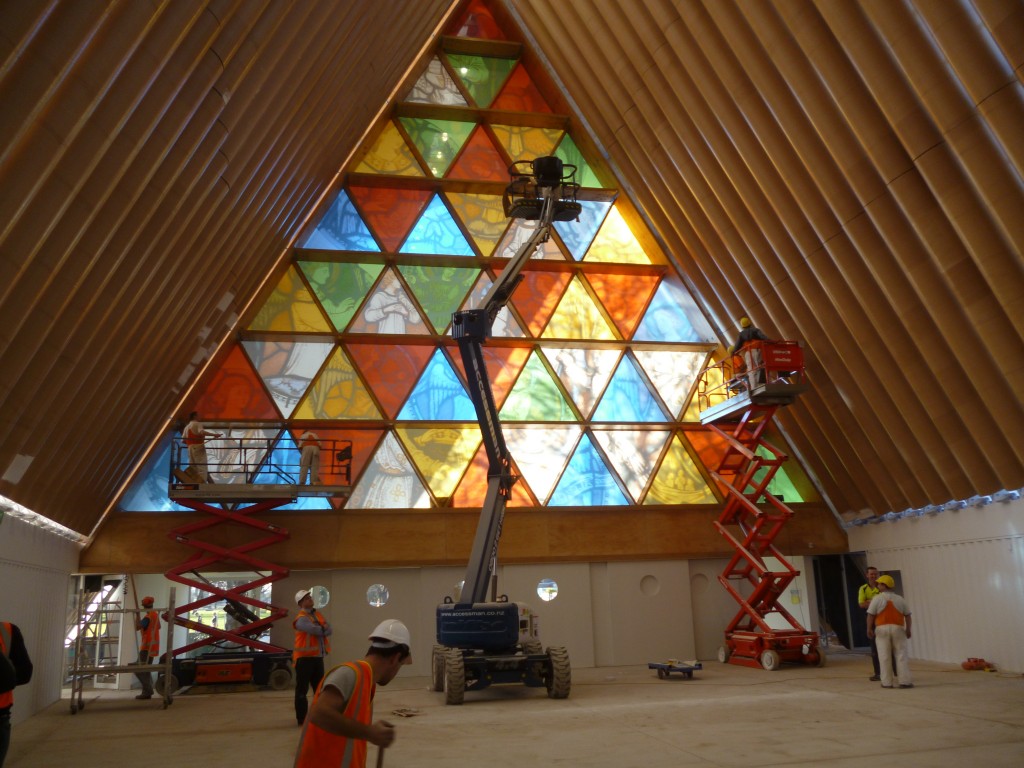
Wind Loads
The ULS for the Rose Window is 2kpa. Across shows a markup of preliminary wind loads for the cladding design. The markup loads are all for Ultimate Limit State, however pressures of up to 3.2kPa can be expected at serviceability levels. As stated on the sketch serviceability loads will be 65% of those stated at ULS.
The end result is an iconic building, if only temporary, that at night when lit up really showcases the Rose Window and the translucent roofing covering the massive cardboard tubes.
